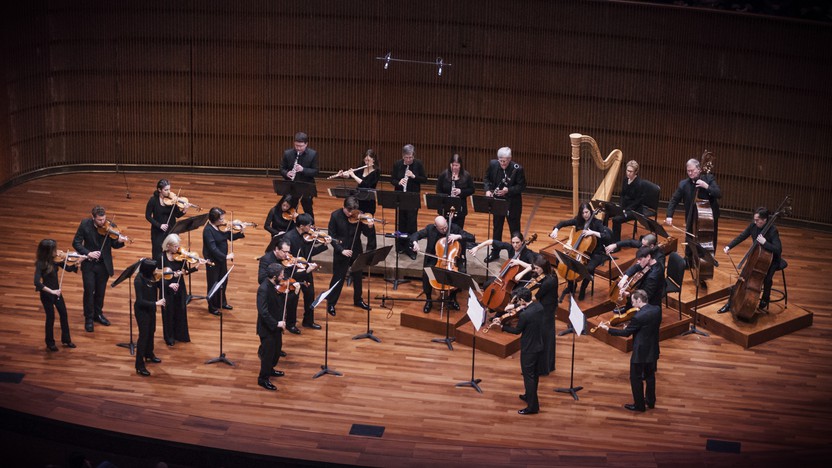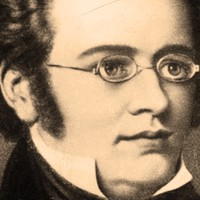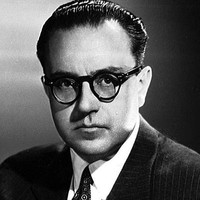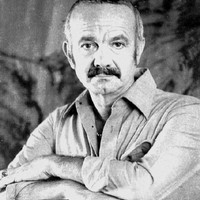Virtual Musician Appreciation Concert
Sponsored By


Sponsored By


While working full-time as a teaching assistant, taking compositions lessons twice a week, and playing viola in a student orchestra, the 17-year-old Franz Schubert managed to write new music at an astonishing rate that averaged at least 65 measures of music every single day. His efforts that year included his Symphony No. 2, which at most might have received a reading from a student orchestra. Not a note of his music had reached the public yet, and during his entire short life he never managed to secure a single performance of any symphony.
As a student composer in Vienna, Schubert could not help but be engulfed by the towering achievements of Haydn, Mozart and Beethoven (who had by then debuted eight of his nine symphonies). Like Beethoven before him, Schubert used the instrumentation and general outline of Haydn’s final London symphonies as a point of entry. In Schubert’s Symphony No. 2, the instrumentation, slow introduction and the use of a minuet third movement instead of a Beethovenian scherzo all point to Haydn’s influence. One particular trick found all over Haydn’s symphonies comes in the Allegro vivace body of Schubert’s first movement, when the main theme enters in the strings at a pianissimo dynamic before being repeated fortissimo by the full orchestra.
The Andante second movement takes the form of a theme and variations, with a simple and song-like theme that adds a playful extra measure in its second half. The climactic fourth variation moves to C minor, which returns as the surprising key center for the Menuetto. Before the finale launches, four introductory measures bridge the harmonic distance back to the home key of B-flat major. Then, like horses on the hunt, the orchestra gallops off at a Presto tempo.
— © Aaron Grad
Aaron Grad ©2016

The musicians of the SPCO created this mashup of two great Argentinian composers’ music specifically for the 3rd Annual Musician Appreciation Concert. The combination of two contrasting tangos by Astor Piazzolla, framed by the opening and closing of Alberto Ginastera’s Variaciones Concertantes, is meant to showcase the talents of our members, individually and collectively, with some good humor thrown in.
Ginastera’s work is a set of variations which each feature different solo instruments of the chamber orchestra. We draw upon our 2017 live video recording, and two of the most memorable solos from that concert. Cellist Julie Albers and harpist Tori Drake open the piece with a theme of great nobility, poise and grace.
Nobility gives way to nostalgia as we break away from the concert hall to listen to a virtual at-home collaboration of SPCO strings and winds performing Piazzolla’s Oblivion, written in 1982. It is a slow tango, recalling the milonga, a song genre of Uruguay and Argentina that was a forerunner of the tango. The sultry solos, played alternately by oboe, clarinet, flute and trumpet, ride gently on the hypnotic, rhythmic undercurrent laid down by the strings.
SPCO violinist Maureen Nelson describes the next tango:
"Originally for flute and guitar, Piazzolla’s Histoire du Tango, has often been transcribed for other instruments. Here we present the first piece, Bordello 1900, on violin and marimba (played with my husband, Matt McClung). There is plenty of subtle and graceful interplay between the performers, meant to reflect the saucy and flirtatious dance. The piece works best if one of the two players wears a red dress. We flipped a coin and Matt lost. "
After our diversion into the tango world of Piazzolla, bassist Zachary Cohen brings us back to the Concert Hall and infuses the reprise of Ginastera’s theme with great passion. While the cello solo ended with a whisper in its highest register, the bass ends with a low rumble that ushers in the full orchestra for a lively and rousing coda.
© Kyu-Young Kim
Kyu-Young Kim ©2021

Born in Argentina, Ástor Piazzolla spent much of his childhood in New York. At age eight he took up the bandoneón, a South American folk instrument in the accordion family, and when he moved back to Buenos Aires as a teenager he played in traditional tango orchestras. Piazzolla went on to win a scholarship to study composition in Paris with Nadia Boulanger, who encouraged Piazzolla to stay true to his tango style. Upon hearing one of his original tangos, she exclaimed, “This is Piazzolla! Don’t ever leave it!”
Piazzolla became the driving force behind a style known as Nuevo Tango, or “New Tango.” Starting in the early 1960s, he formed bands that included electric instruments, and he brought classical rigor to his compositions, whether written for his own concert tours or his many film scores. He recorded Oblivion with a string orchestra for the soundtrack of Marco Bellocchio’s 1984 film Henry IV, and it has since appeared in many other arrangements, including this version by Robert Longfield.
Aaron Grad ©2024

The musicians of the SPCO created this mashup of two great Argentinian composers’ music specifically for the 3rd Annual Musician Appreciation Concert. The combination of two contrasting tangos by Astor Piazzolla, framed by the opening and closing of Alberto Ginastera’s Variaciones Concertantes, is meant to showcase the talents of our members, individually and collectively, with some good humor thrown in.
Ginastera’s work is a set of variations which each feature different solo instruments of the chamber orchestra. We draw upon our 2017 live video recording, and two of the most memorable solos from that concert. Cellist Julie Albers and harpist Tori Drake open the piece with a theme of great nobility, poise and grace.
Nobility gives way to nostalgia as we break away from the concert hall to listen to a virtual at-home collaboration of SPCO strings and winds performing Piazzolla’s Oblivion, written in 1982. It is a slow tango, recalling the milonga, a song genre of Uruguay and Argentina that was a forerunner of the tango. The sultry solos, played alternately by oboe, clarinet, flute and trumpet, ride gently on the hypnotic, rhythmic undercurrent laid down by the strings.
SPCO violinist Maureen Nelson describes the next tango:
"Originally for flute and guitar, Piazzolla’s Histoire du Tango, has often been transcribed for other instruments. Here we present the first piece, Bordello 1900, on violin and marimba (played with my husband, Matt McClung). There is plenty of subtle and graceful interplay between the performers, meant to reflect the saucy and flirtatious dance. The piece works best if one of the two players wears a red dress. We flipped a coin and Matt lost. "
After our diversion into the tango world of Piazzolla, bassist Zachary Cohen brings us back to the Concert Hall and infuses the reprise of Ginastera’s theme with great passion. While the cello solo ended with a whisper in its highest register, the bass ends with a low rumble that ushers in the full orchestra for a lively and rousing coda.
© Kyu-Young Kim
Kyu-Young Kim ©2021

Ludwig van Beethoven was not the type of composer to simply “take dictation from God,” to borrow a phrase from the play Amadeus. His compositions often required painstaking effort and re-evaluation, as evidenced by the more than 8,000 pages of surviving sketches. Yet Beethoven was capable of delivering exquisite work on short notice when he had to, as when he accepted a commission from his friend Franz Clement for a concerto for violin and orchestra.
Beethoven had composed two previous Romances for violin and orchestra, but the new work was his first (and only) complete violin concerto. He finished it just in time for the premiere on December 23, 1806, barely leaving Clement time to learn the solo part. The initial reception was tepid, probably because listeners were unprepared for such a profound and symphonic work in a genre known for solo pyrotechnics and subservient orchestral accompaniment. Felix Mendelssohn and the 12-year-old prodigy Joseph Joachim revived Beethoven’s neglected concerto in 1844, and since then performers and audiences have embraced it as a cornerstone of the violin repertoire.
The concerto starts with a quintessential Beethoven theme: a single note, D, struck five consecutive times by the timpanist. This modest tapping motif proves to be the backbone of the substantial first movement, an outcome typical of Beethoven’s “middle period,” when he mastered the art of distilling musical ingredients down to their purest essence. One exceptionally refined moment comes just after the first movement cadenza, when the violin offers a guileless melody over a naked accompaniment of pizzicato strings.
The slow movement continues the rarified mood with a stately theme and variations accompanied only by the lower winds and muted strings. The Rondo finale, reached without pause through a solo cadenza, supplies the concerto with a more extroverted conclusion. Taking a page from Haydn, who loved to introduce a theme softly and then hammer it hard the second time, Beethoven goes a step farther by delaying the impact until after two melodic cycles, the second voiced even more delicately than the first.
— © Aaron Grad
Aaron Grad ©2017

Wolfgang Amadeus Mozart spent much of his youth traveling through Europe and performing in circumstances arranged by his enterprising father, Leopold. Their last major trip together took them through Italy for over a year, until they returned to Salzburg in December of 1771. This period marked a turning point for Mozart, for at fifteen he was getting a little old to be paraded around by his father as a child prodigy. During the next years in Salzburg, despite tensions with a new Archbishop (who controlled the court’s musicians) and an uncertain professional future, Mozart composed mountains of music, and in the process he matured from a precocious youth to the genius we now recognize.
About half of Mozart’s symphonies dated from the period between 1771 and 1774, including the Symphony No. 29 in A that he wrote near the end of that surge, at the age of eighteen. To begin the Allegro moderato first movement, a distinctive theme built around downward leaping octaves glides over a gentle chorale accompaniment at a piano dynamic. As might be expected, this material repeats at a firm forte dynamic, but the surprise is that it adds a layer of contrapuntal complexity, with the low strings chasing the violins on the same material but delayed by two beats. This heightened focus on layering and counterpoint runs throughout the symphony, as in the Andante second movement, which waits only four measures before adding a bouncing countermelody to the dignified violin theme.
After the slow movement’s hush of muted strings, the Minuet turns more playful, incorporating dramatic dynamic changes and tongue-in-cheek fanfares. To close the symphony, the Allegro con spirito finale re-integrates ideas from the opening movement, including a new theme constructed from octave leaps. Call-and-response phrases and melodic imitation add to the work’s abundance of sophisticated counterpoint, signaling a new summit in Mozart’s symphonic craft.
— © Aaron Grad
Aaron Grad ©2019
British composer Alan Ridout composed this musical setting of Munro Leaf’s classic children’s book, The Story of Ferdinand, in 1971. In addition to being a lauded and prolific composer, Ridout dedicated much of his professional life to musical education of a wide range of ages and in Ferdinand the Bull he succeeded in writing a piece for children that deserves a place on the concert stage. The challenging solo violin part serves to enhance all of the imagery and humor in the story. In the SPCO’s performance, specifically created and recorded for the 3rd Annual Musician Appreciation Concert, we have split the duties of music and narration amongst a wide group of SPCO members and their families, recording from their homes. It’s full of surprises and humor, and we hope that it gives our audiences some joy during these challenging times.
© Kyu-Young Kim
Kyu-Young Kim ©2021
Get driving directions and find nearby parking.
Find dining options close to the venue.
View seating charts to find out where you'll be seating.
SPCO concerts are made possible by audience contributions.
For exclusive discounts, behind-the-scenes info, and more:
Sign up for our email club!
